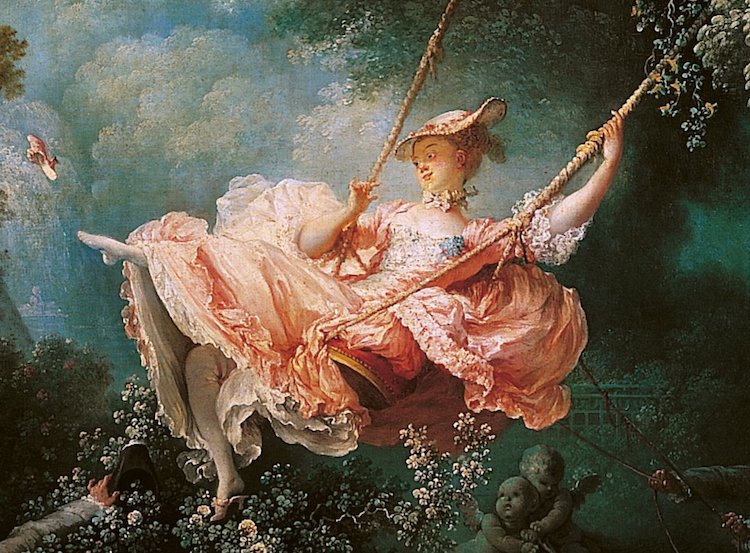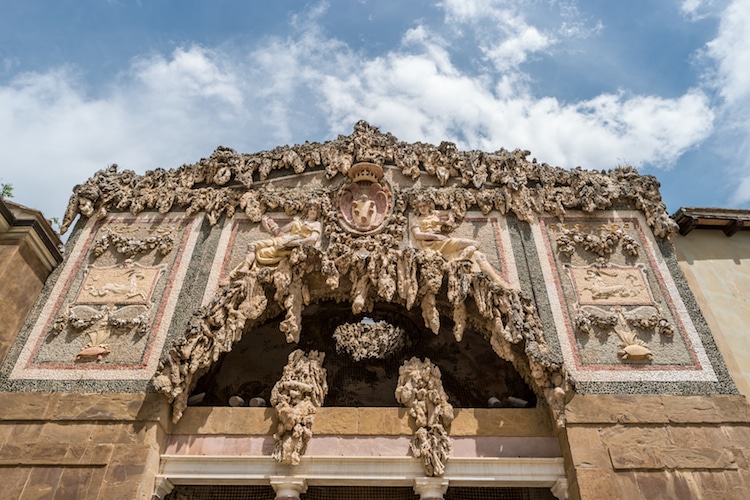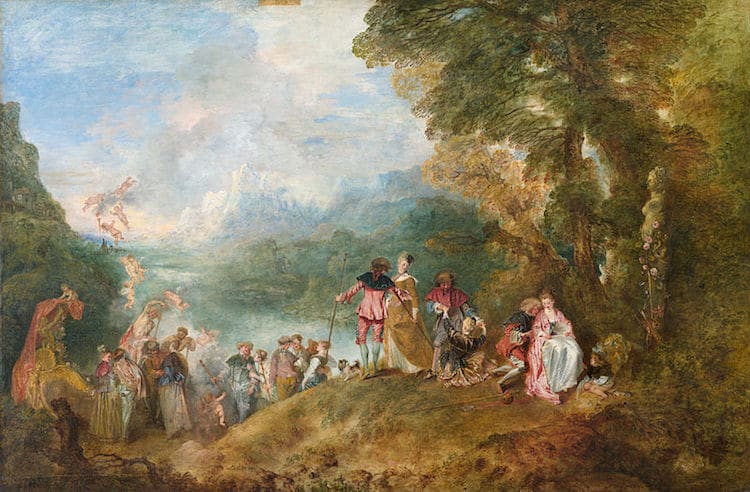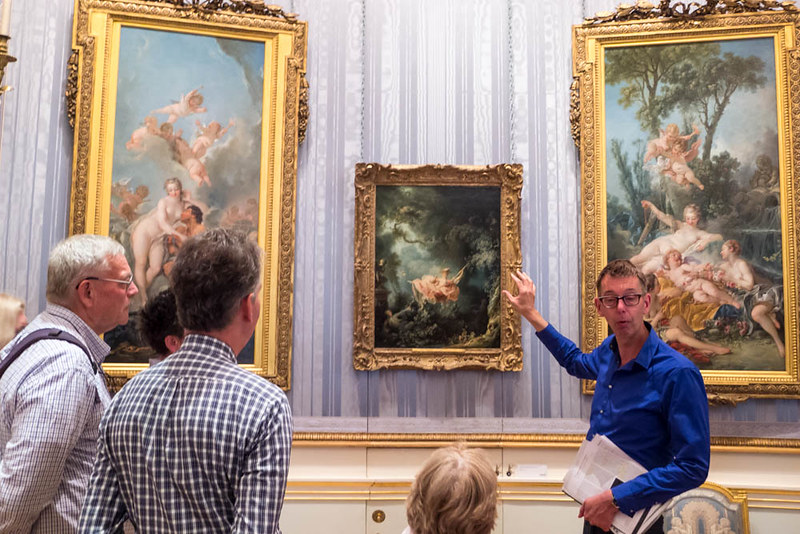How Does Bouchers Pastoral Scene Demonstrate Characteristics Typical of Rococo Art

Renowned for the lighthearted nature of its fine and decorative art, theRococo style flourished in 18th-century France. Artists working in this frivolous aesthetic built upon the flamboyance of the Baroque period, adapting its awe-inspiring aesthetic to produce equally extravagant yet distinctively playful works of art.
The Rococo movement is predominantly associated with two types of art: painting and decorative pieces. Here, we unravel this unique style in lodge to empathise its significance in the history of art.
What was the Rococo period?
The Rococo style was fashionable from 1730 to 1770. While it started in French republic, it eventually spread to other parts of Europe, including the United kingdom, Austria, Germany, Bavaria, and Russia.
The term Rococo is derived from rocaille, a special method of decorating fountains and grottoes that dates dorsum to the Italian Renaissance. Using this technique, artisans would mix seashells, pebbles, and other organic materials with cement, culminating in a naturalistic, under-the-body of water-inspired medium.

Archway of the Buontalenti Grotto in Boboli Gardens Photo: DinoPh via Shutterstock Royalty-free stock photo
Artists working in the Rococo style shared this Renaissance fascination with h2o, as evident in both the fluidity of forms and use of marine motifs in their work.
Rococo Art
Painting
The whimsical nature of rocaille influenced paintings from the catamenia, manifesting every bit frivolous iconography, an attention to ornate item, and an affluence of pastel tones.
Playful Subject Matter
Many Rococo paintings feature refined still jovial subject thing—an approach that was popularized by French painterAntoine Watteau. Equally the father of the fête galante—a genre of painting that favors garden parties, festivals, and other outdoor events equally subject affair—Watteau produced whimsical scenes of people socializing in pastoral landscapes. Frequently featuring fluttering Cupids, Greek goddesses, and other mythological figures, these depictions blend fantasy with reality.

Antoine Watteau, 'The Embarkation for Cythera' (1717) (Photo via Wikimedia Commons Public Domain)
In addition to these open air settings, many Rococo paintings accept place in opulent interiors. Likefêtegalantepaintings, these pieces often feature amusing iconography and mythological influences.
Attention to Detail
Rococo paintings showcase an exquisite attending to detail. Inspired past Renaissance artists, French painterFrançois Boucher is renowned for his interest in emphasizing the intricacies of a scene. His detail-oriented approach to painting materializes as impossibly ornate costumes and "elaborately decorative" skies (The Getty Museum).
Pastel Colour Palette
While Bizarre paintings are associated with deep colors and emotive shadows, Rococo works are characterized by an airy pastel palette. Jean-Honoré Fragonard captures the attracting light-heartedness of this color scheme in his almost famous painting, The Swing. Fix in swirls of light green foliage, The Swing stars a woman dressed in a pale pink wearing apparel playing on a swing and flirtatiously flinging off her shoe.
Rococo Decorative Arts
In add-on to painting, artists as well produced decorative art objects in the Rococo mode. These pieces exhibit interests in asymmetry and a theatrical approach to portraying nature.
Asymmetrical Curves
Rococo decorative arts often incorporate intricate, asymmetrical forms. These serpentine silhouettes are inherently naturalistic yet undoubtedly exaggerated, and are institute in a range of objects, including intricate tables and eye-communicable candelabra.
Nature-Inspired Motifs
Almost of these organic withal ornate designs are inspired by nature—especially seashells, waves, and other sea-related motifs. In addition to this rocaille focus, nonetheless, many Rococo artists besides employed leaf motifs in their piece of work, including gilded, vine-like wall and ceiling embellishments and ornaments featuring stylizedacanthus fronds .
Legacy
Along with Impressionism, Rococo is considered one of the most influential French fine art movements. It is celebrated for both its light-and-airy paintings and its fanciful decorative arts, which, together, showcase the elegant even so ebullient tastes of 18th-century France.

Related Manufactures:
Interview: Surreal Paintings of Women Exploring Areas Affected by Climate Change
ix Famous French Painters Yous Should Know
How Flowers Blossomed Into Ane of Fine art History'south Most Pop Subjects
What Nosotros Can Learn From the Exquisite History and Ornate Artful of Gothic Architecture
Source: https://mymodernmet.com/rococo-art/
0 Response to "How Does Bouchers Pastoral Scene Demonstrate Characteristics Typical of Rococo Art"
Post a Comment